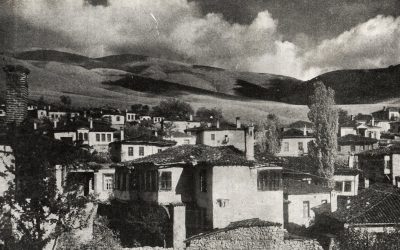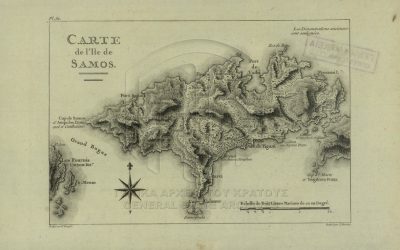Most of us, interested in our Greek family history, crave finding our people in a voter list, a military list or a male register. Many barriers can make Greek records inaccessible, so our enthusiasm, when we find one of the aforementioned types of records, needs not to be described. Using such material we manage to trace our Greek Ancestry centuries back, to the late 1700s and the beginnings of the 19th century. “My g-g-g-g- grandfather”, I remember thinking, “was a 10-year-old, when the Greek Revolution broke out in 1821!” But what about his sisters? What about his mother, his aunt, his own yiayia? Despite our best efforts, there is always a gap in our research: our female ancestors, our X chromosome or, in other words, half us!
The systematic absence of women in historical records is a historical phenomenon: not only has it been consistent throughout history, but it can also be explained for historical reasons. To understand it, let’s firstly ask why societies have invested all types of resources in record keeping. A state, be it a city-state, an empire or a nation-state, needs some income for its economy, an army for its security and expansion and a bureaucracy for its administration. To keep track of, control and direct these three basic elements, a state needs to count its tax-payers, its soldiers, its employees, qualities which have traditionally been secured for males, as socio-cultural standards used to ascribe different roles to women. For this reason, women won’t be found in a 19th-century voter or military list.
Does that mean women are absolutely absent from Greek records? The answer is ‘no’! Recording females could happen, in those cases when females were considered relevant to the authorities. For example, counting, identifying and attempting to repatriate captives of the Ottomans during and after the Greek Revolution of 1821 was a concern of the new Greek state. For this reason, lists of captives were compiled, and those included all Greek captives: male and female, adults and children, poor and wealthy. Another example is provided by Greek census records. ‘Normally’ the head of a household was a male, the father; however when the father was dead, it would be his wife whom the authorities would now consider the family’s “new” head. Therefore, women are quite often found in 19th-century census records. In 1856, for example, out of the 73 household heads registered in the parish census of Kato Chora (Mystras), 20 were widowed women! Still, widows were most times refered to with their late husbands’ names: the wife of Mitros Valikis, for example, was called (and registered as) Mitrena Valikena, ‘the wife of Mitros Valikis’. Nonetheless, in some cases, their original first names were also included. In this case, her name was Stavriani!

Women’s general absence from official records started ceasing, as women’s social, economic and political roles changed within the historical context of the 19th and primarily the 20th century.
Interestingly, in today’s Greece, it is primarily women who choose to take up the preservation of our in-principle “sexist” historical records. The majority of archivists in Greek Archives are female: at the GAK (General State Archives) of Sparta, the one and only male archivist is surrounded by three women, of whom one is the office’s director. The GAK’s Central Office in Athens has also been directed, till recently, by a woman, Dr Minotou.
By Gregory Kontos – Historian, Founder of Greek Ancestry



